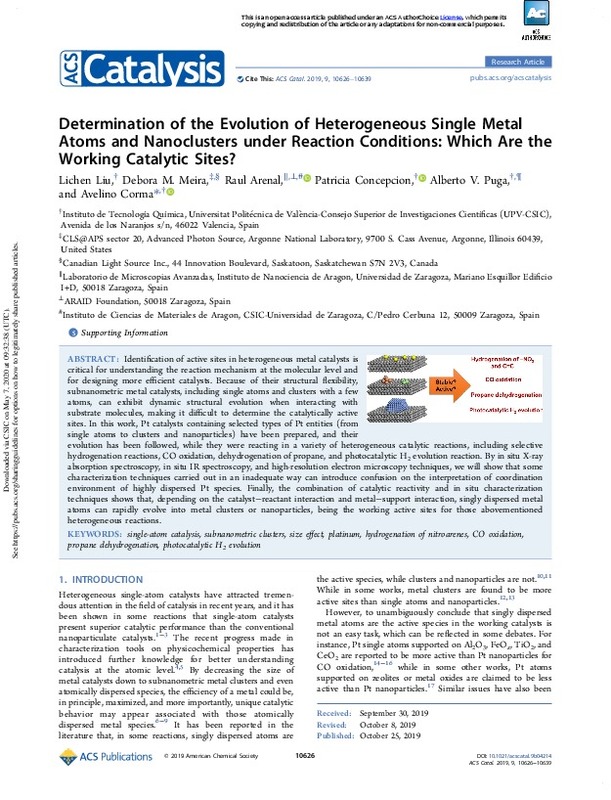JavaScript is disabled for your browser. Some features of this site may not work without it.
Buscar en RiuNet
Listar
Mi cuenta
Estadísticas
Ayuda RiuNet
Admin. UPV
Determination of the Evolution of Heterogeneous Single Metal Atoms and Nanoclusters under Reaction Conditions: Which Are the Working Catalytic Sites?
Mostrar el registro completo del ítem
Liu, L.; Meira, DM.; Arenal, R.; Concepción Heydorn, P.; Puga, AV.; Corma Canós, A. (2019). Determination of the Evolution of Heterogeneous Single Metal Atoms and Nanoclusters under Reaction Conditions: Which Are the Working Catalytic Sites?. ACS Catalysis. 9(12):10626-10639. https://doi.org/10.1021/acscatal.9b04214
Por favor, use este identificador para citar o enlazar este ítem: http://hdl.handle.net/10251/150676
Ficheros en el ítem
Metadatos del ítem
| Título: | Determination of the Evolution of Heterogeneous Single Metal Atoms and Nanoclusters under Reaction Conditions: Which Are the Working Catalytic Sites? | |
| Autor: | Liu, Lichen MEIRA, DEBORA M. Arenal, Raul | |
| Entidad UPV: |
|
|
| Fecha difusión: |
|
|
| Resumen: |
[EN] Identification of active sites in heterogeneous metal catalysts is critical for understanding the reaction mechanism at the molecular level and for designing more efficient catalysts. Because of their structural ...[+]
|
|
| Palabras clave: |
|
|
| Derechos de uso: | Reconocimiento - No comercial (by-nc) | |
| Fuente: |
|
|
| DOI: |
|
|
| Editorial: |
|
|
| Versión del editor: | https://doi.org/10.1021/acscatal.9b04214 | |
| Código del Proyecto: |
...[+] |
|
| Agradecimientos: |
This work has been supported by the European Union through the European Research Council (grant ERC-AdG-2014-671093, SynCatMatch) and the Spanish government through the "Severo Ochoa Program" (SEV-2016-0683). L.L. thanks ...[+]
|
|
| Tipo: |
|









